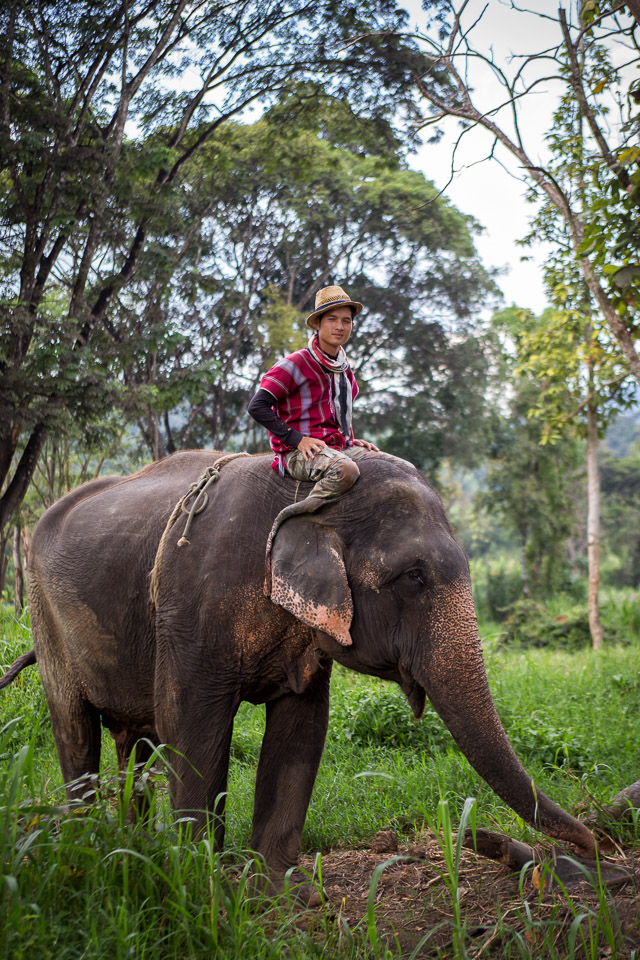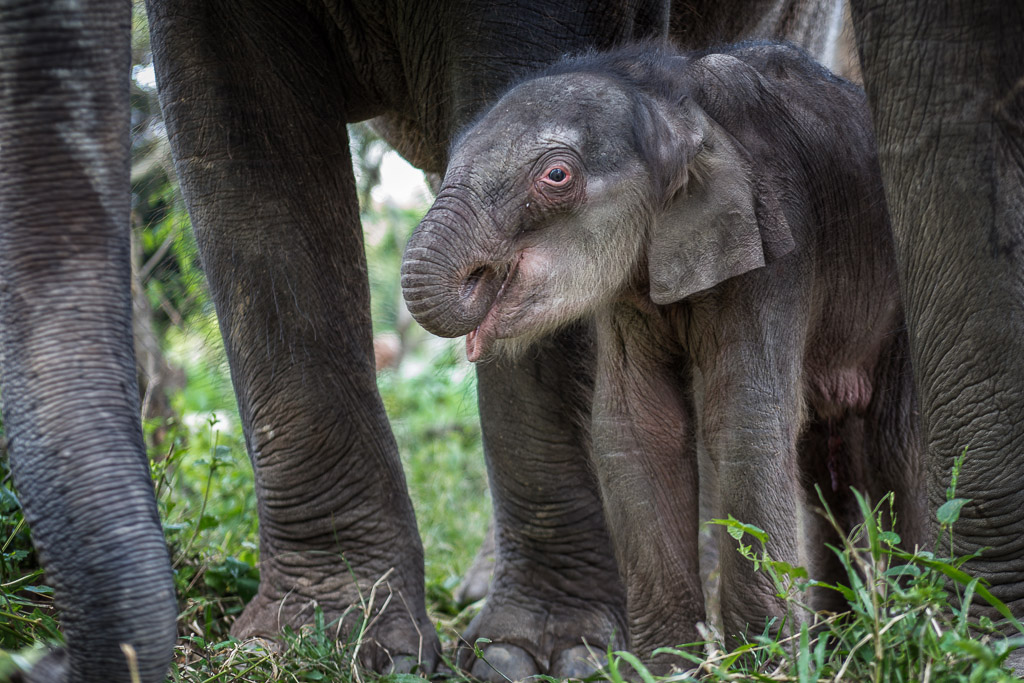SINCE THE OLD KINGDOM OF SIAM, elephants have been an enduring symbol of Thai culture, religion, and royal power. They’ve been used by kings in warfare, exchanged as ransom, served in finding the location for and in the construction of temples, and aided in the logging industry to haul timber and clear forests.
At the start of the 20th century, there were over 100,000 domesticated elephants in Thailand.
In 1989, the Thai government imposed a countrywide logging ban. This was good news for all the remaining wild elephants, dwelling in the small patches of untouched forest, but even though the ban was well-intentioned, it had a detrimental side effect on the domesticated elephant population. They were no longer of use to their owners, who now had to find a way to pay for their care and upkeep.
Nowadays, the situation is critical, with only an estimated 3,000-4,000 elephants left in Thailand, most of them domesticated. In 1986, the International Union for Conservation of Nature and Natural Resources (IUCN) added them to the growing list of endangered species in Asia.
With their natural habitat slowly but surely giving way to industrialization and farming, reintroducing elephants into the wild seemed like an impossible task. Fortunately, the boom of the tourism industry has given a new opportunity to mahouts (elephant owners/caretakers). But as often occurs, when animals and commercialization meet, the risk of abuse and exploitation become real, as elephants had to be brutally trained to learn new ‘tricks’ for tourists.
Today, a viable alternative to commercialized and touristy elephant camps is “responsible elephant tourism,” which can help ensure the presence of Thailand’s elephants in our future…but only if these sites maintain the highest level of care, hygiene, and environmental surroundings.
Here are a few tips to help you choose your camps and sanctuaries responsibly:
- Camps that allow riding an elephant should be avoided. However, if you really want to experience it, make sure that only a single person rides on the neck of the elephant, as opposed to multiple adults riding on a heavy trekking chair on the back of the elephant.
- Another thing to look out for is the use of bullhooks. Handles with sharp metal hooks are used to stab sensitive areas such as the mouth or ears to cause pain and train elephants to behave.
- Elephants need stimulation, enrichment, and plenty of food. The best place to visit them is in their natural environment, or as close to it as possible. Seek out a sanctuary that offers elephants space to roam freely, bathe, and take shelter from the heat.
- Look for camps with “low-impact” activities such as bathing or feeding elephants, and avoid anything that includes a show with unnatural spectacles such as painting, playing football, or carrying tourists through the jungle.
There are many camps in Thailand that call themselves “sanctuaries” while still demonstrating questionable welfare standards. Here are a few that offer truly responsible tourism and volunteering opportunities to those interested in working hands-on with the animals:
Elephant Nature Park
Established in the 1990s, ENP is Sangduen “Lek” Chailert’s labor of love. It aims to provide a sanctuary and rescue center for elephants who are free to roam in a beautiful natural setting, along with other rescued animals such as cats and dogs. Lek has been named a “Hero of Asia” by Time Magazine for her dedication to elephants. ENP also works to preserve and restore the rainforest, as well as educating visitors about local endangered species.
BEES Elephant Sanctuary
Burm and Emily’s Elephant Sanctuary (BEES) provides a place for old and retired elephants to call home. Just like ENP, elephants roam free in a vast preserved area, and the founders focus on educating tourists, as well as offering English courses to the local community. They also grow their own crops to be more sustainable and environmentally friendly.
Wildlife Friends Foundation Thailand
WFFT offers volunteering opportunities to those interested in working hands-on with elephants. Their main objectives are rescuing wild animals and promoting conservation. They offer basic bungalows as accommodation for volunteers. The sanctuary houses not only elephants but also gibbons, macaques, bears, and a tiger.
The Surin Project
While most sanctuaries are located in the north of Thailand around Chiang Mai, the Surin Project is a new initiative committed to improving the living conditions of elephants in northeastern Thailand, and providing sustainable economic revenue for their mahouts in the local community. Their volunteering program allows tourists to learn about elephant welfare and help with daily chores. A word of warning, though: The Surin Project is not an elephant sanctuary and is located within a government run facility that does not have the same welfare standards as the sites listed above.
Just remember: The needs of the elephants, not the tourists, must come first.



